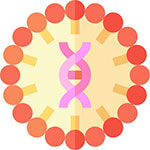Phenotypic Screening
INQUIRYBOC Sciences is committed to providing high-quality phenotypic screening services for global pharmaceutical R&D clients, covering the entire process from early drug discovery to mechanism research. We have established a diversified screening model system, including over 50 cell lines, more than 20 types of organoid models, and animal platforms, supporting efficacy screening and toxicity assessment across multiple disease areas. With our high-throughput automated platform and a vast compound library of over 200,000 small molecules, we can efficiently identify biologically active candidate molecules. Coupled with AI-powered image recognition and deep data analysis technologies, we can precisely capture complex phenotypic changes such as apoptosis, autophagy, and migration.

Service Highlights and Advantages
- Diversified screening models: 50+ cell lines, 20+ organoid and animal models covering various disease types.
- High-throughput screening capacity: Automated platforms support parallel processing and imaging of over 10,000 compounds.
- Image recognition and AI analysis: AI algorithms analyze phenotypic images with an identification accuracy exceeding 95%.
- Rich compound library resources: Over 200,000 small molecules, including natural products and approved drugs.
- Integrated mechanism validation platform: Incorporates siRNA, CRISPR, and omics technologies for mechanism elucidation.
- Comprehensive phenotypic screening: Covers a variety of biological phenotypes including cell viability, apoptosis, autophagy, migration, and differentiation.
Phenotypic Screening Services by BOC Sciences
BOC Sciences has built a comprehensive phenotypic screening service platform based on cells, animals, and organoids, supported by strong platform integration capabilities and diversified model systems. We offer high-throughput, physiologically relevant screening solutions to global clients. The three model systems complement each other, suitable for different R&D stages and levels of complexity, assisting clients in efficiently identifying pharmacologically active candidate compounds, elucidating potential mechanisms of action, and advancing target validation and optimization.
Cell-Based Phenotypic Screening Services
BOC Sciences is equipped with high-throughput imaging platforms and automated cell handling devices to evaluate drug impacts on phenotypic indicators such as cell viability, apoptosis, differentiation, migration, and immune response using 2D and 3D cell models.
- Cancer cell lines (e.g., HeLa, MCF-7, A549, etc.)
- iPSC-derived human cells
- Primary cells (neurons, immune cells, hepatocytes, etc.)
- 3D tumor spheroid models
- Co-culture models (T cells-tumor cells, gut-immune system, etc.)
Organoid-Based Phenotypic Screening Services
Organoids possess high tissue specificity and functional simulation capabilities, enabling the replication of real organ microenvironments. BOC Sciences has developed various disease-relevant human-derived organoid models to support personalized phenotypic screening based on organoids.
- Tumor organoids (colorectal cancer, breast cancer, pancreatic cancer, lung cancer)
- Liver organoids (drug metabolism and toxicity assessment)
- Brain organoids (neurodegenerative disease research)
- Intestinal organoids (microbiota-host interaction research)
- Personalized organoids (PDOs): derived from patient tissues, suitable for precision medicine research
Animal-Based Phenotypic Screening Services
Animal models provide system-level pharmacological evaluation and are an essential step for validating in vivo drug effects following in vitro results. BOC Sciences has a comprehensive experimental animal platform, including various mouse models, zebrafish, and transgenic disease models, supporting in vivo phenotypic screening experiments under multiple indications.
- Mouse disease models
- Zebrafish models
- Drosophila models
- C. elegans models
- Non-human primate models
Do You Need A Consultation?
BOC Sciences integrates innovative technologies to empower your drug discovery with strong momentum, fully dedicated to building next-generation drug screening platforms.
Technology Platforms for Phenotypic Screening
BOC Sciences has developed a multi-dimensional, highly integrated phenotypic screening platform, combining high-throughput imaging, high-content analysis, multi-model biological systems, automated liquid handling, and bioinformatics analysis. This enables comprehensive phenotypic data acquisition and mechanism exploration from the molecular to organ and whole-animal levels. Below are the main technology support modules of the platform:
High-Throughput Screening Technology
- Compatible with 96/384/1536-well plate formats
- Supports various plate reading modes (colorimetric, fluorescence, luminescence)
- Integrates with robotic platforms for unattended continuous operation
- Applicable to toxicity screening, proliferation detection, and kinase activity evaluation at scale
High Content Screening
- Simultaneous multi-channel (DAPI, FITC, TRITC, Cy5, etc.) fluorescence image acquisition
- Automatic identification of cell nuclei, cytoplasm, and organelles
- Quantifiable indicators such as cell morphology changes, apoptosis, stress, intracellular protein translocation
- Supports image classification and clustering via machine learning algorithms
Virtual Screening Platform
- Molecular modeling and screening engines (Schrödinger, MOE, OpenEye, AutoDock Vina)
- Phenotypic mapping and AI learning modules
- Reverse phenotypic profiling
- Multi-omics data integration (transcriptomics, proteomics, metabolomics)
Phenotypic Screening Compound Libraries
- Phenotypic optimized libraries
- Natural product-like library
- Diversity-oriented library
- First-in-class probe library
- Disease-focused libraries
Project Workflow

Project Initiation
After the client submits the screening request, the BOC Sciences project team conducts in-depth communication with the client to clarify research objectives, screening indicators, and timelines. A confidentiality agreement is signed, and a dedicated technical team is established to officially launch the phenotypic screening project.

Model Selection and Establishment
According to project requirements, suitable screening models are selected, including 2D cell lines, 3D organoids, or animal models. A stable and reproducible experimental system is established through biological validation, providing a reliable foundation for subsequent screening.

Screening Protocol Design
Based on the client's goals and the characteristics of the screening model, a scientifically sound screening protocol is designed. This includes compound concentration gradients, treatment time points, phenotypic detection indicators, and the setup of positive/negative controls to ensure data comparability and analyzability.

Compound Treatment and Phenotypic Observation
Compounds are batch-processed into the screening model. Phenotypic changes are comprehensively monitored and raw data collected using techniques such as microscopic imaging, fluorescence labeling, biochemical indicators, or behavioral analysis to capture phenotypic features induced by active molecules.

Data Analysis
Screening data is processed using multi-dimensional approaches, including statistical analysis, image processing, and AI modeling. Candidate compounds with significant phenotypic effects are identified and preliminarily classified by mechanism of action, laying a data foundation for further mechanistic studies.

Mechanism Elucidation and Report Submission
Using literature databases and reverse screening technologies, mode-of-action prediction and potential target analysis are performed on the screened active compounds. A complete research report is compiled and submitted to the client to support compound optimization and project advancement.
Applications of Phenotypic Screening
Early Discovery of Innovative Drugs
Phenotypic screening can identify bioactive small molecules without the need for predefined targets, making it particularly suitable for discovering first-in-class drugs. By observing phenotypic changes in cell or organoid models, it effectively captures candidate molecules that act on complex networks or unknown targets, providing breakthroughs in innovative drug development.
Disease Mechanism Research
By constructing disease-related cellular or animal phenotypic models, phenotypic screening can be used to explore functional changes under pathological conditions, aiding in the identification of key regulatory factors or pathways. Combined with omics and imaging data, it helps to elucidate the pathogenesis of complex diseases such as cancer and neurodegenerative disorders, promoting translational basic research.
Safety and Toxicity Evaluation
Phenotypic screening plays an important role in drug safety assessment. Using models such as zebrafish, cardiomyocytes, or hepatotoxicity systems, it allows intuitive observation of drug-induced morphological, behavioral, or physiological changes to predict potential side effects, helping clients eliminate high-risk molecules early and reduce late-stage development failure rates.
Precision Medicine and Personalized Therapy
By combining organoids or patient-derived cells, phenotypic screening can evaluate inter-individual responses to candidate drugs, supporting the formulation of personalized treatment plans. In tumor drug screening and sensitivity prediction, phenotypic data provides a scientific basis for precision medicine and accelerates personalized drug selection.
FAQs
What types of phenotypic screening models does BOC Sciences offer?
We offer a variety of screening systems, including 2D cells, 3D organoids, and animal models (e.g., zebrafish, mice), covering disease areas such as oncology, neurology, immunology, and metabolism to meet diverse research and screening needs.
Can screening models be customized according to client needs?
Yes. We can develop specific disease models based on client requirements, including patient-derived cell lines and models related to specific molecular targets or signaling pathways, supporting highly flexible and personalized screening services.
What is the maximum number of compounds that can be screened in one run?
With our high-throughput automated platform, we can screen over 10,000 compounds per run, ensuring stable reproducibility and consistency, suitable for large-scale primary screening and validation of active molecules.
Does BOC Sciences provide its own compound library?
Yes. We have established a proprietary library of over 200,000 structurally diverse small molecules, covering natural products, FDA-approved drugs, clinical candidates, and fragment compounds, readily available for phenotypic screening.
What biological indicators can phenotypic screening detect?
We can evaluate various biological phenotypes, including cell proliferation, apoptosis, autophagy, migration, differentiation, morphological changes, and signaling pathway activity, supporting multi-throughput and multi-dimensional data acquisition and analysis.
What detection technologies are used during screening?
Key technologies include high-content imaging, fluorescence microscopy, flow cytometry, Western blot, and qPCR. These are integrated with AI image recognition algorithms to achieve high-precision automated analysis.
Is mechanistic research support provided?
Yes. We offer a closed-loop service from phenotype to mechanism, including siRNA, CRISPR, transcriptomic/proteomic analysis, target validation, and pathway studies to support in-depth mechanism elucidation.
Is a complete project report provided?
Yes. Upon project completion, we provide a detailed report covering experimental design, screening workflow, image and data analysis, statistical results, and preliminary mechanism hypotheses to facilitate clients' subsequent decision-making.
Online Inquiry

